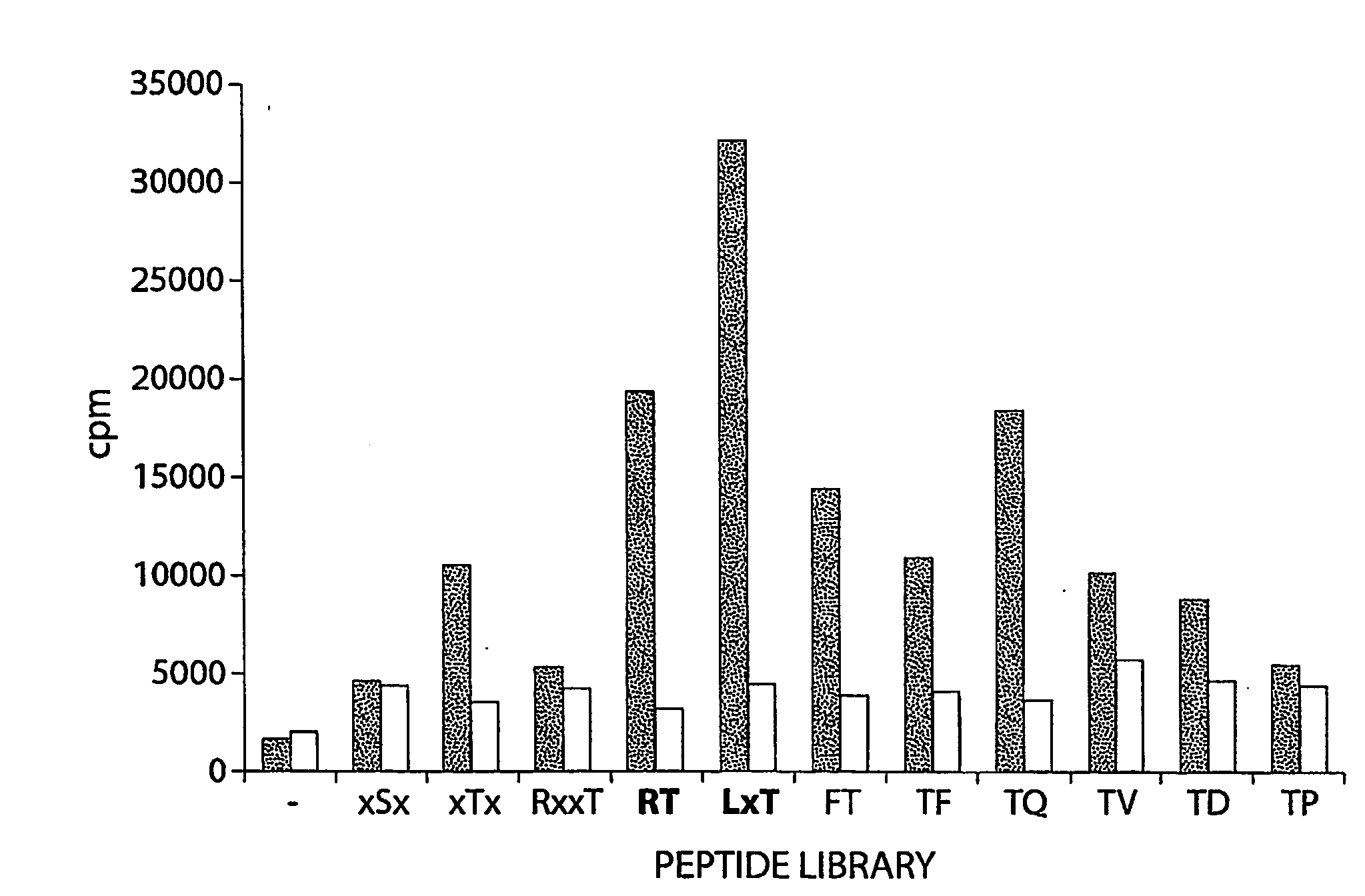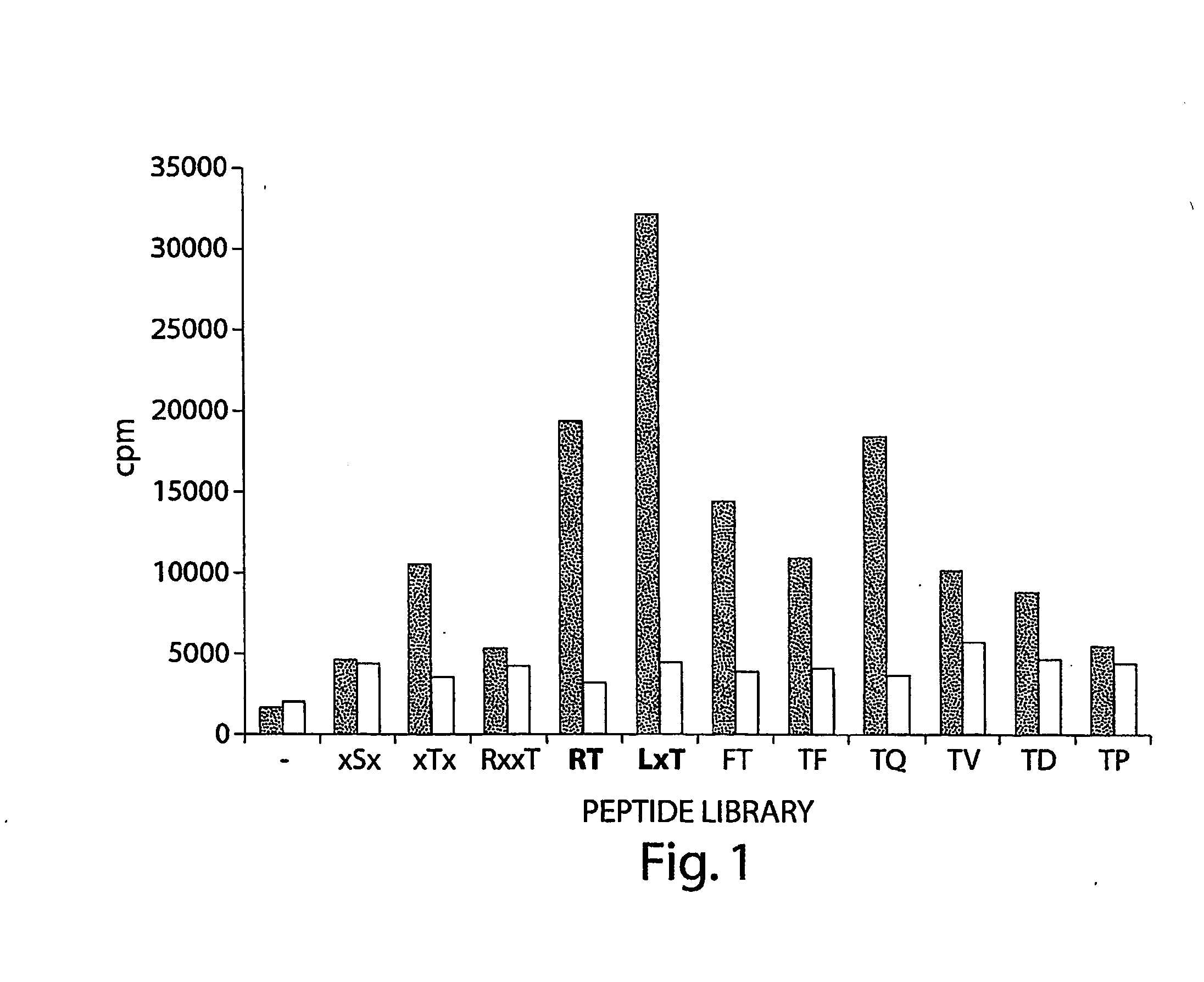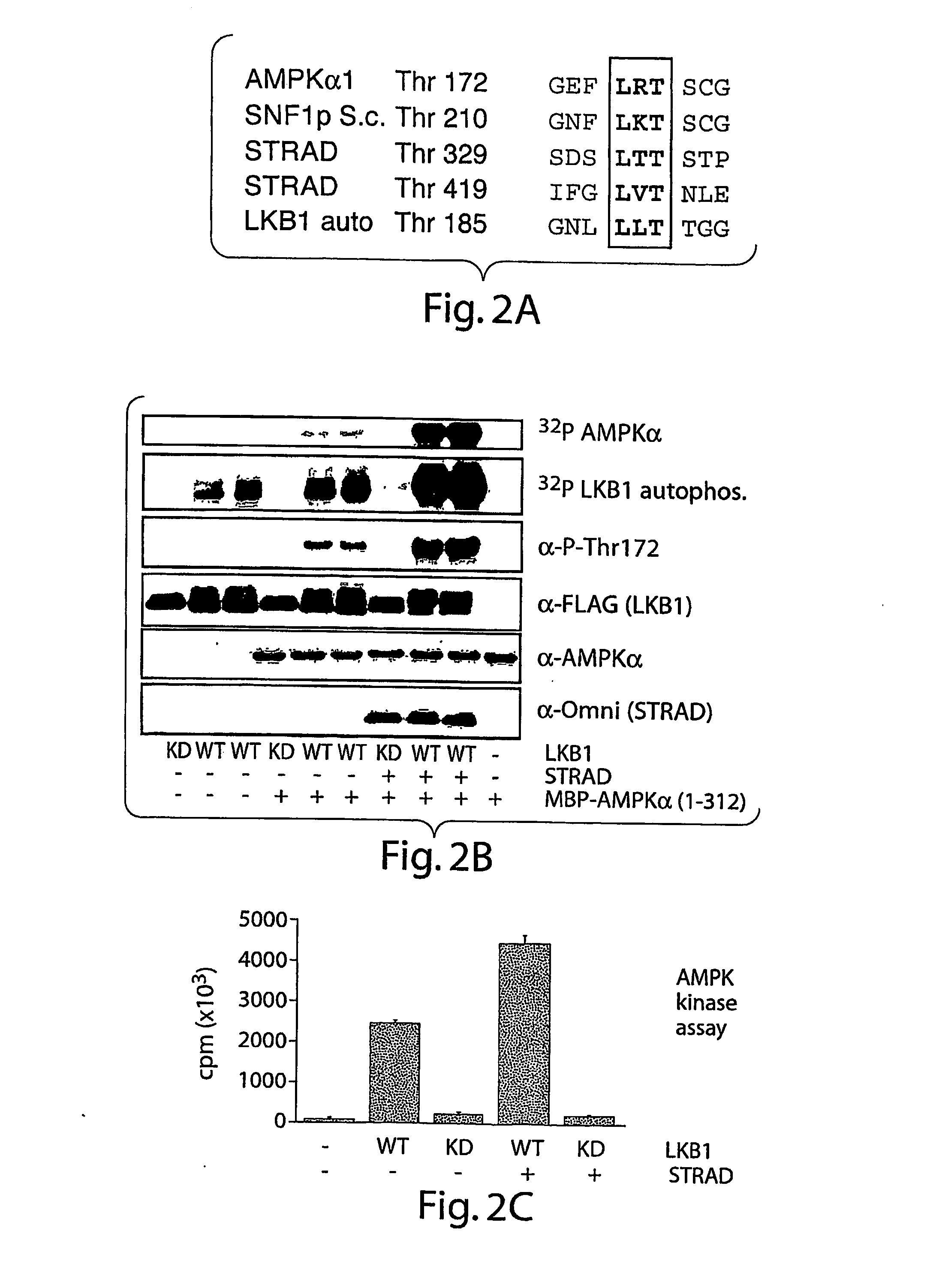Tumor Suppressor Lkb1 Kinase Directly Activates Amp-Activated Kinase
- Summary
- Abstract
- Description
- Claims
- Application Information
AI Technical Summary
Benefits of technology
Problems solved by technology
Method used
Image
Examples
example 1
Summary
[0121]AMP-activated protein kinase (AMPK) is a highly conserved sensor of cellular energy status found in all eukaryotic cells (1). AMPK is activated by stimuli that increase the cellular AMP / ATP ratio. Essential to activation of AMPK is its phosphorylation at Thr172 by an upstream kinase (AMPKK) whose identity in mammalian cells has remained elusive (1). Here we present biochemical and genetic evidence indicating that the LKB1 serine / threonine kinase—the gene inactivated in the Peutz-Jeghers familial cancer syndrome (2)—is the dominant regulator of AMPK activation in several mammalian cell types. We show that LKB1 directly phosphorylates Thr172 of AMPKα in vitro and activates its kinase activity. Lkb1-deficient murine embryonic fibroblasts (MEFs) show nearly complete loss of Thr172 phosphorylation and downstream AMPK signaling in response to a variety of stimuli that activate AMPK. Reintroduction of wild-type but not kinase dead LKB1 into these cells restores AMPK activity. ...
example 2
Introduction
[0160]We have examined the biochemical and biological relationship between LKB1 and mTOR regulation. Here, we report that LKB1 is required for repression of mTOR under low ATP conditions in cultured cells in an AMPK- and TSC2-dependent manner and that Lkb1-null null MEFs and the hamartomatous gastrointestinal polyps from Lkb1-mutant mice show elevated signaling downstream of mTOR. These findings position aberrant mTOR activation at the nexus of these germline neoplastic conditions and suggest the use of mTOR inhibitors in the treatment of Peutz-Jeghers Syndrome.
Methods
Reagents and Cell Lines
[0161]Anti-phospho-AMPK (T172), anti-phospho-ACC (S79), anti-phospho-S6K1 (T389), anti-phospho-S6K1(T421 / S424), anti-phospho-GSK-3 (S9), anti-phospho ribosomal protein S6 (S235 / 236), anti-ribosomal protein S6, anti-eIF4E, anti-phospho-Akt (S473), anti-phospho-Erk (T202 / Y204), anti-4E-BP1, cleaved PARP (mouse-specific) antibodies were obtained from Cell Signaling Technology (Beverly, M...
PUM
| Property | Measurement | Unit |
|---|---|---|
| Cell death | aaaaa | aaaaa |
Abstract
Description
Claims
Application Information
 Login to View More
Login to View More - R&D
- Intellectual Property
- Life Sciences
- Materials
- Tech Scout
- Unparalleled Data Quality
- Higher Quality Content
- 60% Fewer Hallucinations
Browse by: Latest US Patents, China's latest patents, Technical Efficacy Thesaurus, Application Domain, Technology Topic, Popular Technical Reports.
© 2025 PatSnap. All rights reserved.Legal|Privacy policy|Modern Slavery Act Transparency Statement|Sitemap|About US| Contact US: help@patsnap.com



